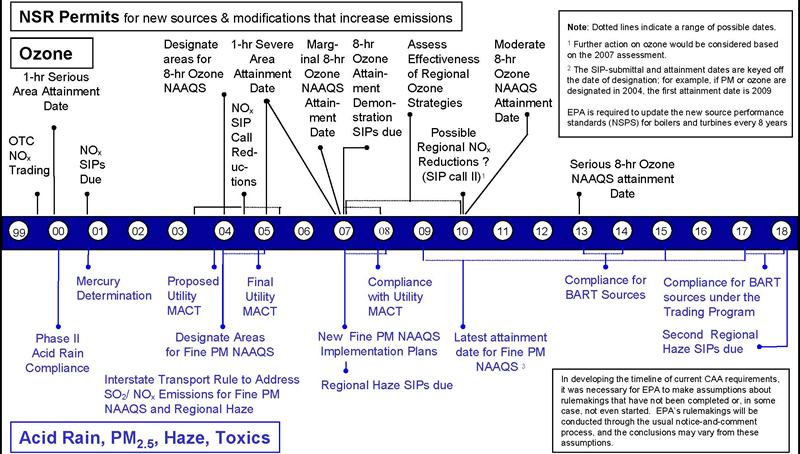Clear Skies
Under Current Clean Air Act Power Plants Would Face a Complex Set of Requirements
Unless otherwise noted, the data presented throughout this Web site reflect EPA’s 2003 modeling and analysis of the Clear Skies Act of 2003. Clear Skies legislation was intended to create a mandatory program that would dramatically reduce power plant emissions of sulfur dioxide (SO2), nitrogen oxides (NOx), and mercury by setting a national cap on each pollutant. The Clear Skies bill was proposed in response to a growing need for an emission reduction plan that will protect human health and the environment while providing regulatory certainty to the industry. The proposed legislation for air regulation never moved out of the Senate Environment and Public Works committee in 2005 and was therefore never enacted.
|
|

